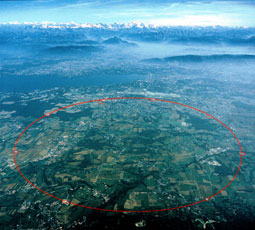THE FIRST STEPS OF A GREAT PROJECT

The idea of the Large Hadron Collider (LHC), began in the early 1980s. Although CERN’s Large Electron Positron Collider (LEP), which ran from 1989 to 2000, was not built yet, scientists already were looking further into the future of particle physics. They imagined re-using the 27-kilometre LEP ring for an even more powerful machine.
To reach the highest possible collision energies and intensities, it was proposed to use two beams of protons for the new machine. The project was named the Large Hadron Collider (LHC), the ‘hadrons’ being matter particles such as protons.
In 1984, a symposium organized in Lausanne, Switzerland, became the official starting point for work on the LHC. Working groups were set up to consider various aspects of the physics that could be studied with a proton collider built in the LEP tunnel. Consequently, the LHC became a priority for CERN.
Several meetings and working groups were organized around these ideas during the following years. In 1989, the first embryonic collaborations began. In spring 1992, a meeting in Evian, France, marked the beginning for the LHC experiments as ‘expressions of interest’ were made.
Meanwhile, a programme involving the construction of increasingly elaborate models and prototypes was launched to study the technical feasibility of such a sophisticated superconducting accelerator, functioning at ‑271.3°C (1.9 K).
These meetings and studies led to the first approval of the project by the CERN Council in December 1994.

